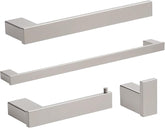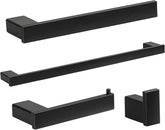End Pipes: Quality Choices for Luxury European Bathrooms
When it comes to designing a luxury European bathroom, most homeowners focus on high-end faucets, marble vanities, or smart shower systems—but overlook a critical element that underpins both functionality and longevity: pipes. In upscale European bathrooms, where durability, aesthetics, and compliance with strict building standards are non-negotiable, ordinary pipes fall short. High-end pipes aren’t just “more expensive versions” of basic options; they’re engineered to withstand Europe’s humid climates, complement luxury design schemes, and ensure decades of leak-free performance. This guide breaks down what makes a pipe “high-end” for European luxury bathrooms, how to choose the right type, and which options top interior designers recommend.
What Defines “High-End Pipes” for Luxury European Bathrooms?
Not all expensive pipes qualify as “high-end” for luxury European spaces. True high-end options must meet three core criteria—standards that align with Europe’s strict building codes and the expectations of luxury homeowners:
1. Compliance with European Safety & Environmental Standards
Luxury bathrooms prioritize health and sustainability, so high-end pipes must carry certifications like:
- EN 1254-1: The European standard for copper pipes, ensuring they’re lead-free and safe for potable water (critical for bathrooms with drinking water taps).
- EN 15874: For cross-linked polyethylene (PEX) pipes, guaranteeing resistance to high temperatures (up to 95°C) and pressure—essential for European homes with centralized hot water systems.
- EU ECOLABEL: A mark of eco-friendliness, meaning pipes are made from recyclable materials (e.g., 90%+ recycled copper) and won’t leach harmful chemicals into water.

2. Durability to Withstand European Climates
Europe’s variable weather—from humid Mediterranean summers to cold Northern winters—puts extra stress on bathroom pipes. High-end options address this with:
- Corrosion resistance: For example, seamless copper pipes with a thin tin coating prevent rust in humid bathrooms, while PEX pipes with an oxygen barrier stop mold growth inside the pipe.
- Temperature stability: Unlike cheap PVC pipes that crack in cold temperatures, high-end PEX or stainless steel pipes maintain flexibility even in unheated bathrooms (common in older European homes).
- Long lifespan: Quality copper pipes last 50+ years, and premium PEX pipes (e.g., those from Uponor or Viega) have a 30+ year warranty—matching the longevity of luxury bathroom fixtures.
3. Aesthetic Compatibility with Luxury Design
In open-concept European bathrooms (where pipes may be visible behind glass shower enclosures or under floating vanities), high-end pipes double as design elements:
- Sleek finishes: Polished copper pipes add warmth to a rustic luxury bathroom, while brushed stainless steel complements modern minimalist designs.
- Low-profile design: Thin-walled (but strong) stainless steel pipes fit into narrow spaces (e.g., between marble tile walls) without disrupting the bathroom’s clean lines.
- Customizable lengths: High-end brands offer cut-to-size pipes, avoiding unsightly joints or excess length that cheap pre-cut pipes often have.
Top 3 High-End Pipe Types for Luxury European Bathrooms
Based on compatibility with European standards, durability, and design versatility, these three pipe types are the top choices for upscale bathrooms:
1. Seamless Copper Pipes (Best for Classic Luxury)
Copper has long been a staple in European luxury homes—and for good reason. Seamless copper pipes (made from a single piece of metal, no welds) offer:
- Timeless appeal: Polished copper develops a subtle patina over time, adding character to traditional luxury bathrooms (think French chateaus or Italian villas).
- Superior heat transfer: Ideal for bathrooms with underfloor heating or thermostatic showers, as copper quickly distributes hot water without heat loss.
- Easy maintenance: A quick wipe with a soft cloth removes water spots—no harsh cleaners needed, which protects the pipe’s finish.
Best for: Classic, rustic, or heritage-style luxury bathrooms.
Top brands: Viega (Germany), Mueller Industries (UK), and KME (Austria).
2. Oxygen-Barrier PEX Pipes (Best for Modern Luxury)
For contemporary European bathrooms (e.g., Scandinavian or Bauhaus-style), oxygen-barrier PEX pipes are a sleek, practical choice:
- Flexibility: PEX bends easily around corners, eliminating the need for multiple elbows (which create weak points in the pipe system). This is perfect for bathrooms with custom shower enclosures or floating vanities.
- Quiet operation: Unlike copper pipes that “bang” when hot water is turned on, PEX absorbs water pressure, keeping the bathroom quiet—a key detail in luxury spaces.
- Cost-effective luxury: While more expensive than PVC, PEX is cheaper than copper and still offers a 30+ year lifespan. It’s a favorite among designers for balancing luxury and budget.
Best for: Modern, minimalist, or eco-friendly luxury bathrooms.
Top brands: Uponor (Finland), Rehau (Germany), and Wavin (Netherlands).
3. Sanitary Stainless Steel Pipes (Best for Industrial Luxury)
Industrial luxury (think lofts in Berlin or London) calls for pipes that are both rugged and refined—and sanitary stainless steel pipes deliver:
- Matte, industrial finish: Brushed or satin stainless steel pairs perfectly with concrete countertops, black metal fixtures, and exposed brick walls.
- Hygiene: Stainless steel is non-porous, so it won’t harbor bacteria or mold—ideal for bathrooms where cleanliness is a priority (e.g., homes with young children or allergy sufferers).
- High pressure resistance: Suitable for luxury bathrooms with rain showers or multi-jet body sprays, as stainless steel handles high water pressure without leaking.
Best for: Industrial, urban, or minimalist luxury bathrooms.
Top brands: Geberit (Switzerland), Grohe (Germany), and Hansgrohe (Germany).
4 Key Tips for Installing High-End Pipes in European Bathrooms
Even the best high-end pipes will underperform if installed incorrectly. Follow these tips to ensure your investment pays off:
1. Hire a Plumber Certified in European Standards
Not all plumbers are familiar with EN 1254-1 or EN 15874. Look for professionals with certifications from organizations like the European Plumbing Industry Federation (EPIF)—they’ll know how to:
- Properly solder copper pipes (avoiding weak joints that leak)
- Install oxygen-barrier PEX with the right fittings (e.g., crimp vs. push-fit)
- Test the pipe system to European pressure standards (10 bar for 30 minutes)
2. Plan for Future Maintenance
Luxury bathrooms are long-term investments, so design your pipe system with maintenance in mind:
- Install access panels: Hide pipes behind removable marble or glass panels (instead of sealing them in walls) so plumbers can inspect or repair them without damaging the bathroom.
- Use labeled valves: Mark cold/hot water valves with engraved metal tags (matching your faucet hardware) for easy shutoff if issues arise.
3. Match Pipes to Your Fixtures
High-end pipes should complement—not clash with—your other luxury fixtures:
- If you have brass faucets, choose polished copper pipes (they’re similar in tone but add texture).
- For black matte faucets, opt for black-coated stainless steel pipes (some brands like Grohe offer this custom finish).
- Avoid mixing metals: Stick to one or two metal tones (e.g., copper + chrome, stainless steel + black) for a cohesive look.
4. Budget for the Total Cost (Not Just the Pipes)
High-end pipe installation involves more than just the pipes themselves. Factor in:
- Fittings: Premium brands (e.g., Viega) charge more for brass or stainless steel fittings, but they’re worth it—cheap plastic fittings crack within years.
- Labor: Certified plumbers in Europe charge €80–€120 per hour, but a proper installation avoids costly leaks later.
- Warranties: Pay extra for extended warranties (e.g., 10+ years) from the pipe brand—this covers replacement if the pipes fail due to manufacturing defects.
Final Recommendation: Which High-End Pipe Is Right for You?
- If you’re renovating a historic European home: Go with seamless copper pipes—they match traditional architecture and meet heritage building codes.
- If you’re designing a modern eco-luxury bathroom: Choose oxygen-barrier PEX from Uponor or Rehau—they’re recyclable, energy-efficient, and fit sleek designs.
- If you want an industrial-chic look: Sanitary stainless steel from Geberit or Grohe is your best bet—they’re durable, easy to clean, and elevate the room’s edgy aesthetic.
In luxury European bathrooms, pipes are more than just “hidden infrastructure”—they’re a key part of the space’s functionality and style. By choosing high-end pipes that meet European standards, you’ll ensure your bathroom looks beautiful and works flawlessly for decades to come.




